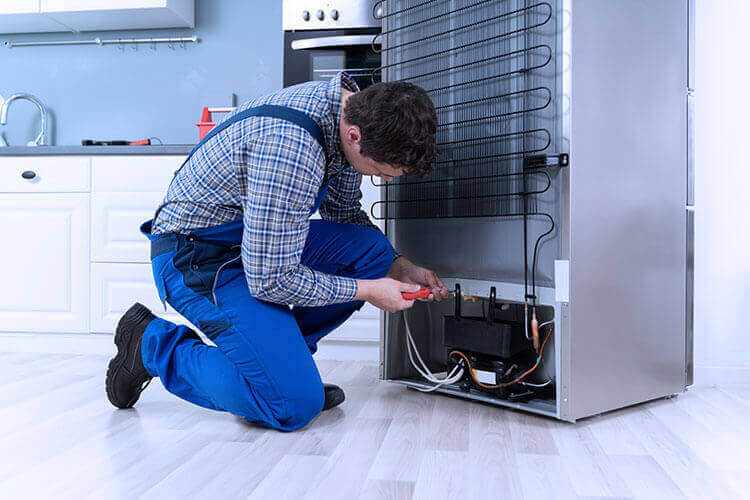
When your refrigerator stops working, it can feel like a silent, mysterious failure. But in reality, your appliance is often sending out clear distress signals. Learning to read these clues—from strange sounds to specific symptoms—can help you understand the root of the problem. When you're faced with a refrigerator not cooling, playing detective can help you communicate the issue effectively to a professional and understand the urgency of the situation. This guide will help you decode the signals and figure out what causes refrigerator to stop cooling.
Clue #1: The Sound from Behind the Fridge
The sounds your refrigerator makes (or doesn't make) are a primary clue. Most of the key components are located in the back, near the bottom.
Symptom: A Constant, Loud Hum and Excessive Heat. If the compressor at the back seems to be running non-stop and feels very hot to the touch, this often points to dirty condenser coils. The compressor is working overtime to try to dissipate heat through coils that are clogged with dust and pet hair. This is your cue to clean the coils.
Symptom: A "Click" Followed by Silence. If you hear a distinct "click" every few minutes, but the compressor never kicks on and starts humming, you are likely hearing a failed start relay. The click is the relay attempting to send power to the compressor, but failing.
Symptom: Total Silence. If the unit is completely silent (aside from the interior light), the problem is likely electrical. The fault could be with the thermostat, which isn't telling the compressor to start, or the main control board.
Clue #2: The Location of the Problem
Where the cooling problem is occurring provides another set of powerful clues. Is it the entire unit, or just one part?
Symptom: Freezer is Icy, Refrigerator is Warm. As discussed in detail, this is the classic airflow problem. The cold is being made, but it's not being circulated. This points directly to a failed evaporator fan motor or a blocked vent due to a malfunctioning defrost system.
Symptom: Neither Compartment is Cooling. When the entire unit is warm, it signals a more fundamental failure. You likely have a problem with the "sealed system." This could be a failed compressor, a bad start relay, or a loss of refrigerant. These are major repairs that always require a professional.
Clue #3: Visual Evidence Inside the Fridge
Sometimes, the evidence is right there in plain sight. What you see inside the compartments can tell you a lot about the nature of the failure.
Symptom: A Wall of Frost at the Back of the Freezer. If you remove the back panel inside your freezer and see the evaporator coils completely encased in a thick layer of frost, you have visual confirmation of a failed defrost system.
Symptom: Condensation and Water Droplets Everywhere. A refrigerator not cooling will quickly lead to condensation. If you see excessive "sweating" on the interior walls and on food packages, it's a clear sign that the temperature has been above a safe level for some time. This is less a clue to the cause and more a confirmation of the severity of the problem.
Conclusion: From Clues to a Solution
By paying attention to these auditory, locational, and visual clues, you can move from a state of panic to one of informed action. You may not be able to fix the problem yourself, but you can understand its likely source. Being able to tell a repair technician, "My freezer is cold, but the fridge is warm, and I don't hear the fan," is infinitely more helpful than simply saying, "My refrigerator's not working." These decoded distress signals are the key to understanding what causes refrigerator to stop cooling and getting a fast, effective, and professional repair.

Write a comment ...